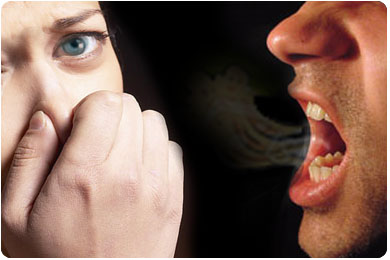Author: Lizzie Smith – blog last updated on Wednesday 8th January 2024
No one really wants bad breath or stink from your mouth. It’s terrible for your oral health and, therefore, for your teeth. It’s also not great for your self-confidence and social life. Fortunately, though, bad breath can usually be remedied quite easily.
The most common causes of bad breath (halitosis)
In 85% of cases, the cause of a foul-smelling breath odour is located in the oral cavity. The odour is caused by sulphurous gases, which are secreted by anaerobic bacteria. These thrive in low-oxygen environments, where they convert sugar and carbohydrates into substances such as ammonia, methanethiol and hydrogen sulphide.

Anaerobic bacteria are harmful oral bacteria that, in addition to bad breath, also cause caries (cavities) and gum infections. Together with food residues and saliva, they form part of dental plaque. This remains on your teeth, on the border between teeth and gums, and between your teeth. An excess of these bacteria also means the balance of the oral flora is disturbed.
Now you know what’s causing the odour, it’s time to tackle it. You can do this by following these 5 steps:
1. Choose mild, mouth-friendly oral care products
Good daily oral hygiene is, of course, a prerequisite for combatting bad breath. So, brush your teeth carefully twice a day for 2 minutes. You should also remove plaque daily by flossing or brushing, and then rinsing your mouth with mouthwash.
However, things can still go wrong. Many toothpastes and mouthwashes contain antiseptic agents to combat harmful oral bacteria. Whilst that’s a nice idea, ingredients such as alcohol, triclosan and chlorhexidine also kill beneficial microbes. This disrupts the balance of the oral flora, which ultimately doesn’t help control harmful bacteria and keep your breath fresh.
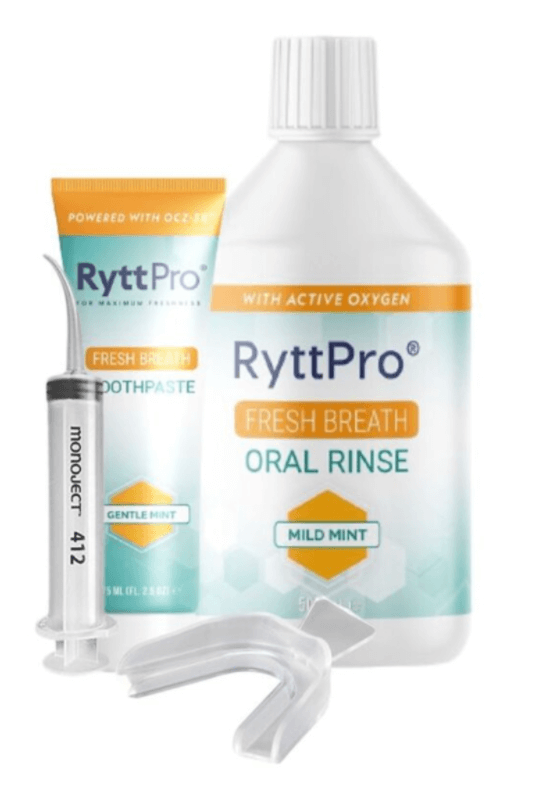
You obviously want to combat harmful anaerobic bacteria and eliminate the cause of your bad breath. But you can do this with mild toothpaste and mouthwash, provided they contain the right ingredients. The brands RyttPro and JuliBrite comply with this. They use active oxygen formulas, which not only kill the anaerobic bacteria but also neutralise their smelly gases at the molecular level.
- RyttPro Toothpaste Magic Mint is a mouth-friendly toothpaste that effectively fights harmful bacteria. This is possible thanks to the powerful formula OZ-3X, a combination of active oxygen (stabilised chlorine dioxide), zinc and cetylpyridinium chloride (CPC). Excipients include vitamin Q10, aloe vera, xylitol and fluoride.
- JuliBrite toothpaste has a unique formula in which the active oxygen is generated by honey. Together with zinc, this kills harmful bacteria without affecting the balance of the oral flora. This is supplemented with the natural enzyme hyaluronan, which has an anti-inflammatory effect that’s as effective as chlorhexidine. But unlike the latter remedy, it respects the oral flora. The natural sweetener xylitol has also been added to this toothpaste.
These toothpastes are effective but entirely mouth-friendly for maintaining a balanced and healthy oral flora. Of course, they don’t contain any questionable chemicals.
The same applies to the mouthwashes from these brands: effective but mouth-friendly formulas that clean your teeth, care for your gums and keep your breath fresh.
2. Clean your tongue
A significant source of bad breath is often forgotten… your tongue, especially the back of it. It’s naturally rough due to the presence of tongue and taste buds, so white deposits can easily become stuck. Those white deposits on your tongue are comparable to dental plaque, which includes harmful bacteria with their smelly gases.
So it’s a good idea to clean your tongue. But don’t brush with your toothbrush! A toothbrush is designed to clean smooth tooth enamel with coarse, stiff bristles. Plus, the head of your toothbrush is too high to reach the back of your tongue without making you gag.
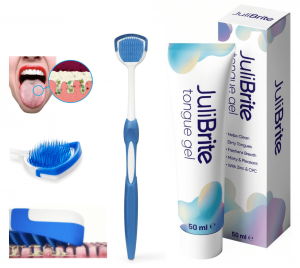
Clean your tongue with a tongue scraper or a special tongue brush with fine, soft bristles. Even better, use a tongue cleaner with a brush and a scraper side. RyttPro and JuliBrite both offer a Clean Tongue Package. In addition to the effective tongue cleaner, you’ll also find a product you can use when brushing. Let it work for a while, and then scrape the gel or foam, together with the collected dirt, from your tongue with the scraper side.
Your tongue will be perfectly clean with Oral Icon Tonsil Serum. This serum disinfects the tongue in an intensive but mouth-friendly way. You drip it on the back of your tongue and down your throat to kill the last harmful bacteria and neutralise their gases.
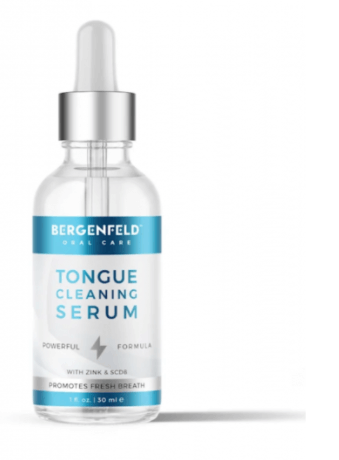
3. Keep your mouth hydrated
Dry mouth complaints are detrimental to the balance of the oral flora, which increases the risk of bad breath. But other oral problems such as caries (cavities), gingivitis, and an oral fungal infection also lurk if your mouth contains too little saliva.
Therefore, you should always pay attention to dry mouth complaints. To start, choose your toothpaste and mouthwash carefully. Use oral care products with the right ingredients, such as those from RyttPro and JuliBrite. This way, you prevent further dehydration and acidification, and you don’t further disrupt the oral flora.
Between brushing your teeth, use special products against a dry mouth, such as Moist-R Moisturizing Mouth Spray. Easy to use on the go are Moist-R Hydrating Chewing Gum and Moist-R Xylitol Tablets for Dry Mouth. The natural sweetener xylitol in these dental care chewing gum and tablets improves the oral flora and the acidity in the mouth and stimulates the salivary glands.
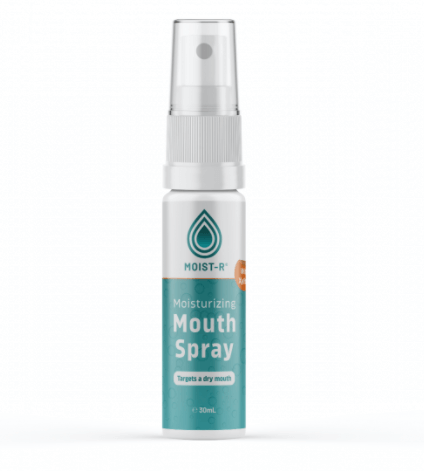 4. Keep your nasal cavity clean during flu and colds
4. Keep your nasal cavity clean during flu and colds
A bad cold or sinus infection can also cause your breath to smell bad. The nasal mucus, or snot, is full of bacteria and their smelly secretions, so it’s worthwhile to soothe the nasal mucous membranes during the disease. The so-called post-nasal drip, the natural discharge of nasal mucus to your throat, therefore, contains fewer bacteria that end up in your throat.
TonsilFresh Nasal Sinus Drops are a natural and non-addictive remedy. The drops consist of a saline solution with xylitol, both mild but very effective in combating bacteria. This not only prevents bad breath but also white deposits on your tongue and, if you’re sensitive to them, tonsil stones.
5. Remove tonsil stones
If you’ve followed the four steps above and you still have bad breath, you may be suffering from tonsil stones. For this, you still need to have your tonsils, which consist of lymphatic tissue and play a significant role in our immune system.
The lymphatic tissue excretes waste products, such as blood and mucus cells. If the tonsils get a messier texture due to ageing and throat infections, waste products can accumulate in the irregular grooves. To make matters worse, debris from outside remains stuck in it, creating a dirty mix in which harmful oral bacteria can thrive.
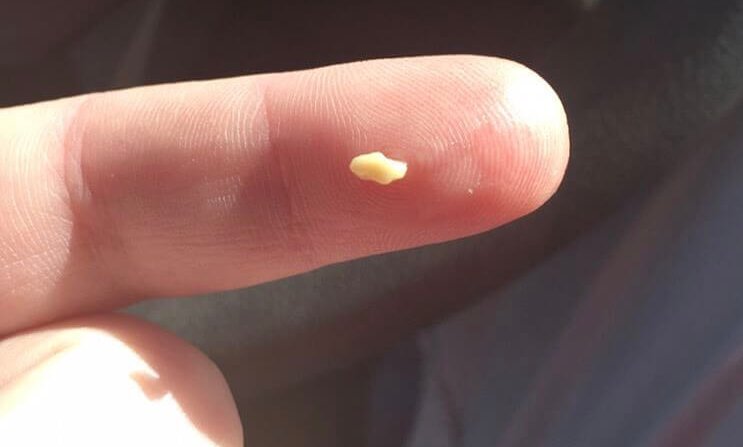
Tonsil stones smell enormously due to the foul-smelling substances that the well-fed bacterial colony in the tonsil stone excretes. For example, people who take perfect care of their teeth and clean their tongue daily can still suffer from bad breath.
In that case, take a good look in the mirror with your mouth open. Tonsil stones can be seen as white lumps in the tonsil crypts and tonsils. In addition, your tonsils can also contain tonsil stones. Your tonsils are located at the very back of your mouth, at the base of your tongue.
The good news is you can prevent or slow down the occurrence and growth of tonsil stones. The measures you can take to this end partly overlap with those for solving bad breath, such as using toothpaste and mouthwash with mild but effective formulas, cleaning your tongue, treating dry mouth complaints and keeping your nasal cavity clean.
But there are more factors involved. If you can’t prevent them, you can still remove them yourself to tackle this source of bad breath.
You can read more about it here.
Be sure about your breath by measuring it correctly
If you carry out the above steps and want to measure their effect accurately, the Hali-Q Breath Tester is your ally. The Breath Tester measures the quality of your breath precisely by measuring the level of smelly gases.
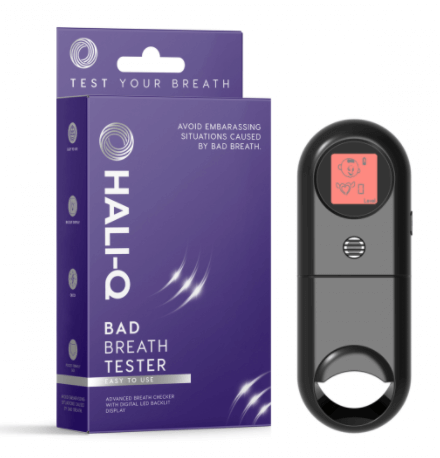
Follow the general rules of life
In addition to the steps mentioned above that are aimed at the mouth, throat and nose, a healthy diet is also crucial. Consume plenty of fruit, vegetables and oily fish (such as mackerel and salmon) and as little sugar and refined carbohydrates (such as white bread) as possible.
Unhealthy habits such as smoking and excessive use of alcohol are certainly not good for your oral health and, therefore, the freshness of your breath. So, take measures in this area if applicable.
You can read more about the relationship between smoking, alcohol, and bad breath here.

Consult your doctor
By following the above steps, you’ve got a good chance of successfully solving your bad breath. In 85% of cases of bad breath, the cause is suboptimal oral hygiene, which doesn’t have to mean not brushing or flossing your teeth at all. The ingredients of your toothpaste can also work against you; you’ve forgotten to care for your tongue, or you have tonsil stones.
If you’ve checked all of this, the cause of your bad breath could be an underlying disease. In that case, you should consult your doctor.
Sources
British Dental Association: Improving oral health
British Dental Journal: Help your patients tackle bad breath

